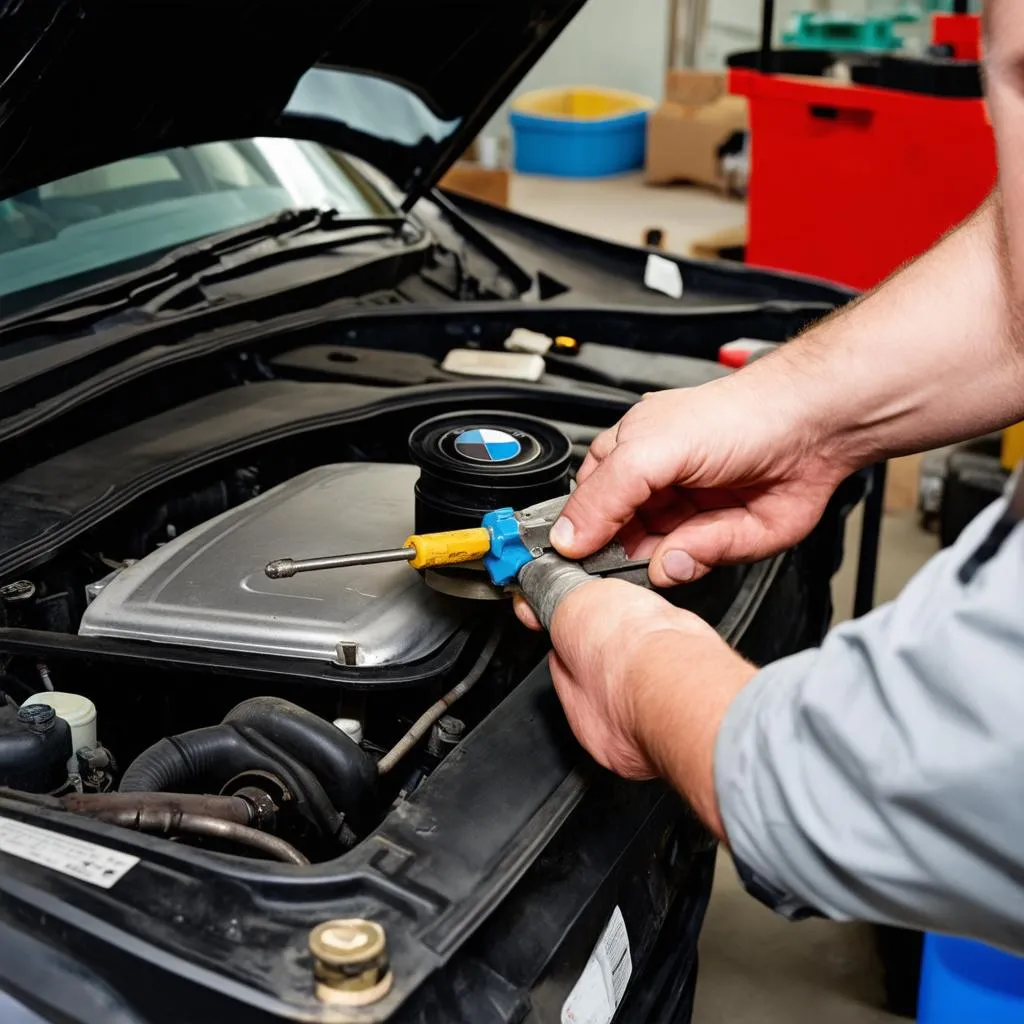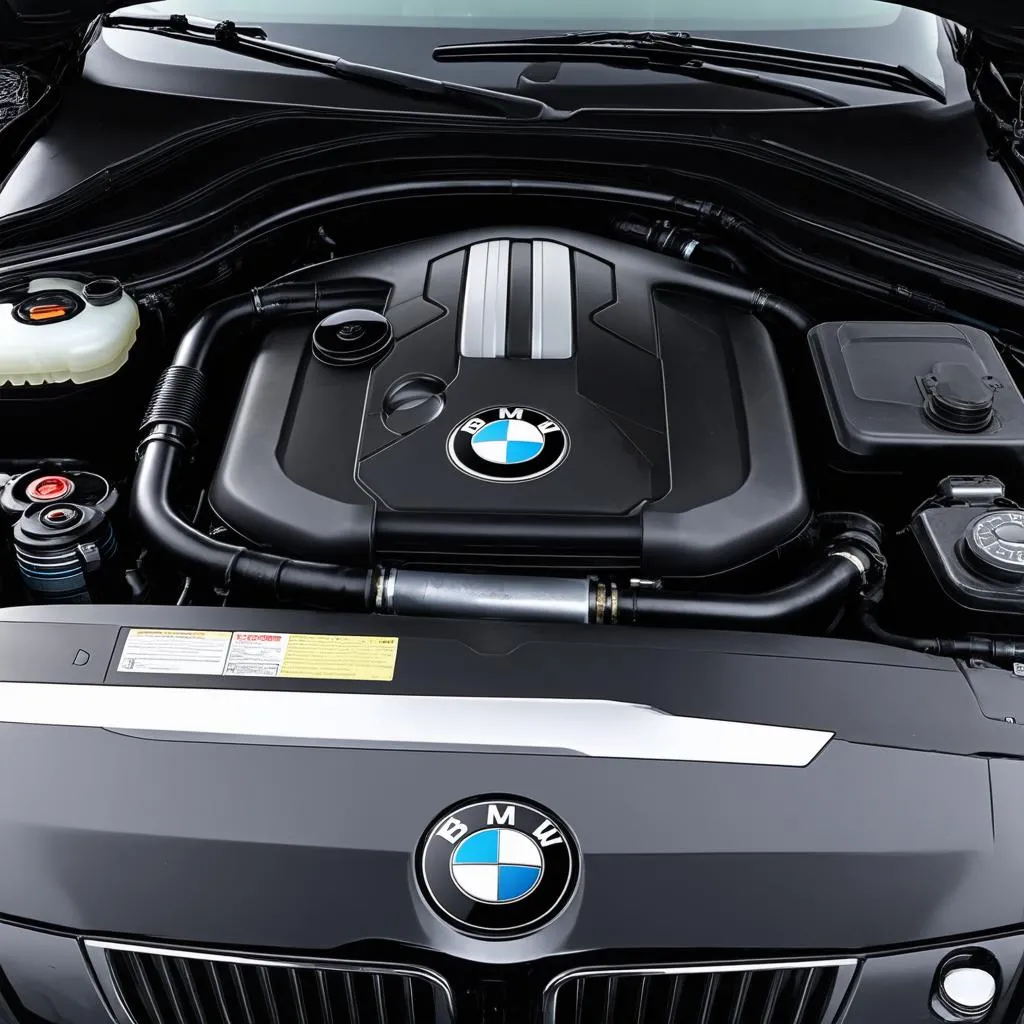BMW E90 Thermostat: Everything You Need to Know
Let’s face it, your BMW E90 is more than just a car – it’s a symbol of performance and style. But even the most powerful machines need a little TLC, and that’s especially true for the thermostat. Imagine yourself driving down the sunny highway, enjoying the open road, only to suddenly feel your engine overheat. This might be a sign your E90 thermostat is failing. Don’t worry; we’ll dive into the world of Bmw E90 Thermostats and help you understand everything you need to know.
What is a Thermostat and Why is it Important?
Think of your car’s engine as a high-performance athlete. It needs to maintain a specific temperature to perform optimally. That’s where the thermostat comes in. It acts like a temperature regulator, opening and closing to control the flow of coolant through the engine.
The Importance of a Healthy Thermostat
A healthy thermostat ensures your engine stays at the ideal operating temperature. It prevents overheating, which can lead to costly repairs, and helps maintain fuel efficiency. A faulty thermostat, however, can cause serious problems for your beloved E90.
Picture this: Imagine you’re cruising through the bustling streets of New York City, and your E90 suddenly starts to overheat. The thermostat is struggling to regulate the engine’s temperature, leaving you stranded in the middle of Manhattan. Not a pleasant scenario, right?
Common BMW E90 Thermostat Problems
Let’s talk about some common signs your E90 thermostat might be on the fritz:
- Overheating Engine: This is the most obvious sign. If your temperature gauge is rising, it’s a clear indication of a possible thermostat issue.
- Erratic Temperature Fluctuations: Your engine temperature should be relatively stable. If it’s bouncing up and down, it could be a sign of a faulty thermostat.
- Reduced Fuel Efficiency: A malfunctioning thermostat can disrupt the engine’s temperature regulation, leading to a decrease in fuel efficiency.
How to Diagnose a Thermostat Problem
Now, let’s get hands-on. Diagnosing a thermostat issue can often be a simple process.
- Check the Coolant Level: Start by checking the coolant level in your E90’s reservoir. Low coolant can also lead to overheating.
- Inspect the Thermostat Housing: Look for any leaks or cracks around the thermostat housing.
- Use a Diagnostic Scanner: A professional diagnostic scanner can help you identify any engine codes that might indicate a faulty thermostat.
Replacing the BMW E90 Thermostat: What You Need to Know
Replacing your E90 thermostat is a relatively straightforward task, even for a DIY enthusiast.
Here’s a general overview of the process:
- Locate the Thermostat Housing: The thermostat housing is typically located on the engine block, near the water pump.
- Drain the Coolant: Before you begin, drain the coolant from the radiator.
- Remove the Thermostat Housing: Use appropriate tools to remove the thermostat housing.
- Install the New Thermostat: Carefully install the new thermostat, ensuring it’s properly seated in the housing.
- Reassemble and Refill Coolant: Reinstall the thermostat housing, making sure all bolts are tightened securely. Refill the radiator with fresh coolant.
Tip: Always use a genuine BMW thermostat or a high-quality aftermarket replacement.
Frequently Asked Questions:
Q: How often should I replace my BMW E90 thermostat?
A: While there’s no definitive answer, it’s generally recommended to replace your thermostat every 80,000-100,000 miles, or as recommended by your E90’s maintenance schedule.
Q: What happens if I ignore a faulty thermostat?
A: Ignoring a faulty thermostat can lead to severe engine damage, including head gasket failures and warped cylinder heads. These repairs can be very expensive.
Q: Can I replace the thermostat myself?
A: You can replace the thermostat yourself if you have basic mechanical skills. However, if you’re not comfortable working on your own car, consult a qualified mechanic.
Q: What are some common mistakes to avoid when replacing a BMW E90 thermostat?
A: One common mistake is failing to properly bleed the air out of the cooling system after replacing the thermostat. This can lead to air pockets in the system, which can cause overheating.
Q: Where can I find a new BMW E90 thermostat?
A: You can purchase a new thermostat from your local BMW dealership, or from online retailers like Amazon or eBay.
Q: How much does it cost to replace a BMW E90 thermostat?
A: The cost of replacing a BMW E90 thermostat can vary depending on your location, the mechanic you choose, and whether you opt for a genuine BMW part or an aftermarket replacement. Expect to pay anywhere from $100 to $300 for the entire job.
Need Help with Your BMW E90 Thermostat?
Don’t hesitate to reach out to us at Car Diag Xpert for expert advice and assistance. We’re here to help you keep your BMW running smoothly.
Contact us at +84767531508 (Whatsapp) for quick and efficient support.
Conclusion:
Keeping your BMW E90 thermostat in top shape is crucial for its longevity and performance. By understanding the common problems, signs of a failing thermostat, and how to replace it, you can keep your engine running cool and your E90 hitting the road with confidence.
Let us know in the comments below if you have any questions about your BMW E90 thermostat! We’d be happy to help!
 BMW E90 thermostat replacement
BMW E90 thermostat replacement
 BMW E90 coolant system
BMW E90 coolant system
 BMW E90 overheating issues
BMW E90 overheating issues
